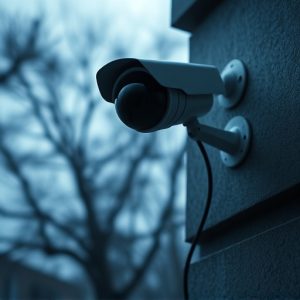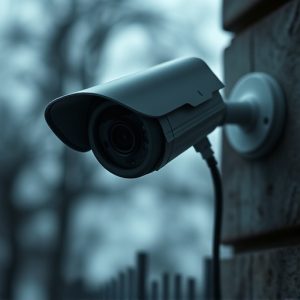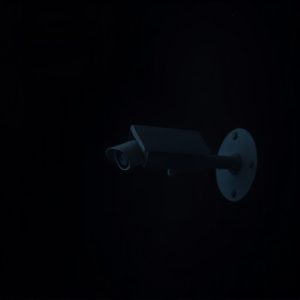Securing Your Space: A Legal and Practical Guide to Hidden Home Security Cameras
Hidden security cameras are a discreet way to enhance home security while maintaining interior aesth…….
Hidden security cameras are a discreet way to enhance home security while maintaining interior aesthetics by blending into everyday objects. They offer high-definition recording, wide-angle coverage, and various connectivity options for comprehensive monitoring, with advanced models featuring motion detection to optimize storage. These cameras can be integrated with smart home systems for remote access and real-time surveillance via mobile devices or computers, acting as a deterrent against theft. It's essential to place them in common areas where privacy laws are not violated, avoiding sensitive locations like bedrooms or bathrooms to stay within legal boundaries. Homeowners must comply with federal and state privacy laws such as the Video Privacy Protection Act and the CCPA, ensuring all occupants are informed about surveillance. Ethical and legal considerations dictate that cameras should be positioned in areas without a reasonable expectation of privacy. The footage must be handled responsibly, adhering to data protection regulations like GDPR. When selecting a camera, prioritize features like high-resolution video capture, night vision, motion detection, real-time alerts, and a wide-angle lens for effective monitoring at all times. Proper placement and adherence to privacy laws are critical for the legal and ethical use of hidden security cameras in home surveillance systems. Regular updates and testing ensure optimal functionality and performance, providing homeowners with enhanced security and peace of mind.
When safeguarding your home, a hidden security camera can provide invaluable peace of mind. This article delves into the nuances of deploying such discreet surveillance tools within your living space, from legal considerations to selecting and strategically placing the optimal device. We’ll guide you through understanding their role, ensuring compliance with privacy laws, and offering tips for effective installation and monitoring. Uncover the essentials of securing your home with a hidden security camera.
Understanding Hidden Security Cameras: A Comprehensive Guide
Hidden security cameras serve as a discreet means to enhance the safety and security of your home while maintaining aesthetic integrity. These devices are designed to blend seamlessly into their surroundings, offering a high level of surveillance without drawing attention. Understanding the intricacies of hidden security cameras begins with recognizing their various forms, which can range from wall outlets, smoke detectors, clock radios, and even picture frames. The key advantage of these cameras is their ability to prevent tampering and reduce the likelihood of being discovered by potential intruders, thus providing unobtrusive monitoring.
When selecting a hidden security camera, it’s crucial to consider factors such as the camera’s resolution, field of view, storage capabilities, and connectivity options. High-definition cameras with wide-angle lenses can capture more area, ensuring no detail is missed. Additionally, cameras equipped with motion-detection sensors can start recording only when movement is detected, conserving memory space and battery life if the camera is wireless. Ensuring your hidden security camera system is compatible with your existing smart home devices can also enhance its functionality and allow for remote monitoring via smartphones or computers. This interconnectivity not only provides peace of mind but also acts as a powerful deterrent against unwanted activity within your home.
The Legal Implications of Using Hidden Security Cameras in Your Home
Hidden security cameras can serve as a deterrent against theft, vandalism, and other unlawful activities within a private residence. However, their use is not without legal implications. Homeowners must navigate privacy laws to ensure they are in compliance with state and federal regulations. The installation of hidden cameras should be done transparently among household members, as laws like the Video Privacy Protection Act and various state statutes mandate that individuals are aware when they are under surveillance. This requirement is not just a matter of respecting personal boundaries but also a legal necessity to avoid potential charges of invasion of privacy or unreasonable search, which could arise if someone were unknowingly filmed without consent.
Moreover, hidden security cameras must be placed in areas where individuals would reasonably expect privacy, such as bedrooms or bathrooms, to avoid any legal issues. The placement and use of these cameras should align with the prevailing privacy expectations and laws. It’s also crucial for homeowners to consider the storage and transmission of footage, as regulations like the California Consumer Privacy Act (CCPA) and the General Data Protection Regulation (GDPR) in Europe dictate how personal data can be collected, used, and protected. Failure to adhere to these laws could result in legal consequences and civil liabilities, emphasizing the importance of understanding the legal framework surrounding the use of hidden security cameras within one’s home.
Selecting the Best Hidden Security Camera for Your Home: Features and Placement Tips
When integrating a hidden security camera into your home’s security system, selecting the most appropriate device is paramount for effective monitoring and peace of mind. A high-quality hidden security camera should offer discreet design options to blend seamlessly with your home environment, preventing potential intruders from easily detecting its presence. Consider models that provide high-resolution video capture for clear image details, coupled with night vision capabilities to ensure round-the-clock surveillance. Additionally, opt for cameras equipped with motion detection and real-time alerts to stay abreast of activities within their field of view.
Placement is another critical factor in maximizing the utility of your hidden security camera. Strategically position the camera in blind spots where it can cover key areas without drawing attention. Ensure it has a wide-angle lens for broader coverage and a field of view that captures all necessary angles. Position the camera at a height that avoids being easily noticed, yet still captures facial features or any other critical details. Also, consider the camera’s field of operation range to ensure full coverage of the intended area, and place it in a location with stable Wi-Fi connectivity to maintain uninterrupted communication with your monitoring device. Remember to adhere to local privacy laws when placing cameras, ensuring that you are not capturing areas where privacy is expected or legally protected.
Installing and Monitoring Your Hidden Security Camera: Steps to Ensure Your Home's Safety
When it comes to safeguarding your home, a hidden security camera can offer peace of mind by discreetly monitoring your living spaces. Installing such a device involves careful planning and execution to ensure it remains undetected while effectively capturing footage. Begin by selecting the ideal location; areas with high foot traffic or valuable assets are prime spots. Ensure the camera is positioned with a clear, unobstructed view of the intended area. Use sturdy adhesives or mounts that do not compromise the camera’s security or its ability to record crystal-clear footage. Connect the camera to your Wi-Fi network to access live feeds remotely via a compatible smartphone app. This allows for real-time monitoring, enabling you to keep an eye on your home from anywhere at any time. Additionally, set up motion detection alerts if available, which will notify you via your device whenever movement is detected within the camera’s range. Regularly update the firmware of your hidden security camera to enhance its functionality and security features. Remember to test the camera frequently to ensure it operates as intended and adjust its settings for optimal performance based on the lighting conditions and field of view. By following these steps, you can effectively install and monitor your hidden security camera, contributing to your home’s safety and security.


